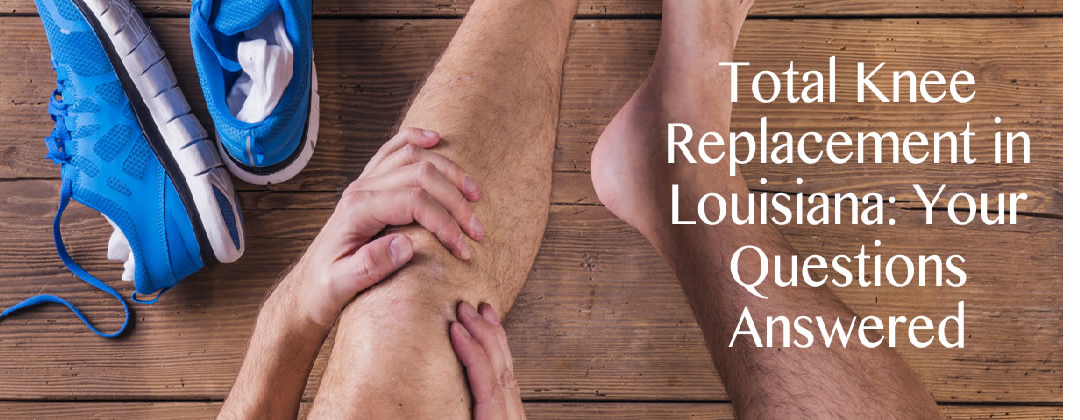Knee replacement in Louisiana – also called arthroplasty – is a surgical procedure to resurface a knee damaged by arthritis. Metal and plastic parts are used to cap the ends of the bones that form the knee joint, along with the kneecap. This surgery may be considered for someone who has severe arthritis or a severe knee injury.
Today we’re answering the most common questions we receive about this condition.
- When is the right time to undergo a knee replacement in Louisiana? There’s no precise formula for determining when you should have a knee replacement. But if you’re having trouble with daily activities, you may be a candidate.
- Is there a way to avoid surgery? For some, lifestyle modifications, physical therapy, medication, or alternative treatment methods such as can help manage knee problems.
- What will occur during surgery? During the operation, the surgeon moves your kneecap aside and cuts away damaged bone and cartilage, which are then replaced with new metal and plastic components. The components combine to form a synthetic joint that mimics the movement of your natural knee.
- What pieces are used in a knee replacement and how are they kept in place? Implants are comprised of metal and medical-grade plastic. To seal these components to your bone, two methods are used – application of bone cement and a cement-less approach that uses components with a porous coating that grows into a tissue or attaches to the bone.
- Should I be concerned about anesthesia during surgery? Any surgery with anesthesia has risks. However, complication rates and mortality for general anesthesia are extremely low.
- How much pain will I experience after surgery? Although you’ll experience some pain after surgery, it should diminish quickly, within four or five days, maximum. Your doctor will prescribe medication to help you manage the pain, which may be administered intravenously immediately after surgery or taken orally.
- What should I expect immediately following surgery? You will wake up with a bandage over your knee and, possibly, a drain to remove fluid from the joint. Your knee may be elevated and cradled in a continuous passive motion machine that gently extends and flexes your leg while you’re lying down.
- What can I expect during recovery and rehabilitation from the knee replacement in Louisiana? Most patients are up and walking the day of surgery or the next, with the aid of a walker or crutches. After you return home, therapy will continue regularly for weeks, and you’ll be asked to engage in specific exercises designed to improve the functionality of the knee.
- What do I need to do to prepare my home for recovery? If you live in a multiple-story house, prepare a bed and space on the ground floor so that you can avoid the stairs when you first return. Make sure the house is free of obstructions and hazards.
- Will I require any special equipment? Your doctor may recommend that you use a CPM machine at home while lying on a flat surface or bed. A CPM machine helps to increase your knee motion during the first few weeks following knee replacement in Louisiana and is usually prescribed to slow the development of scar tissue and to help you achieve the maximum range of motion from your implanted knee.
- What activities will I be able to engage in? You should be able to resume normal daily activities such as walking and bathing for several days. Low-impact exercise should also be doable after your rehabilitation period, typically 6 to 12 weeks.
Want to know if you are a candidate for a total knee replacement in Louisiana? Call our office today to Schedule a Consultation so we can discuss your goals and options and devise a plan of action.
